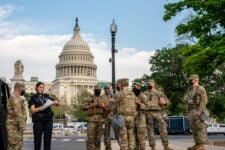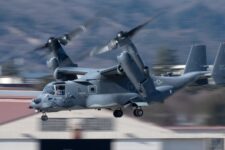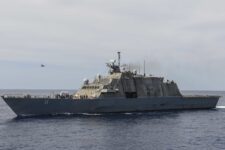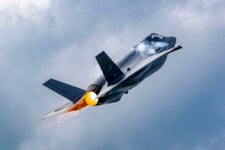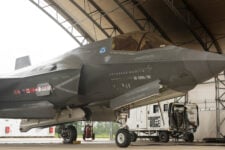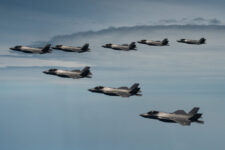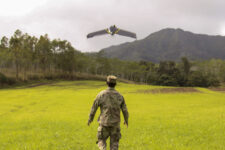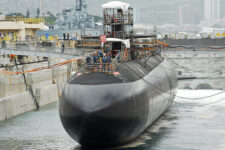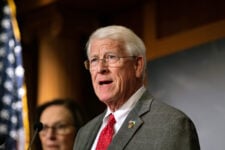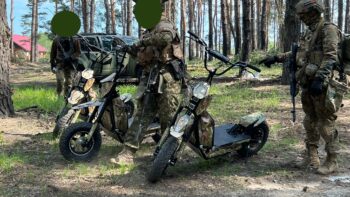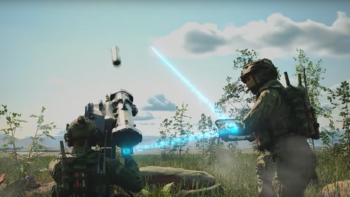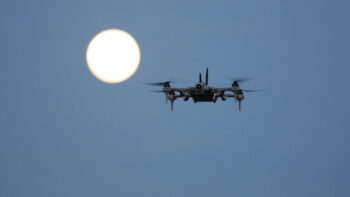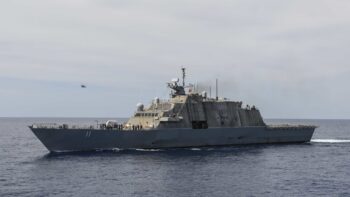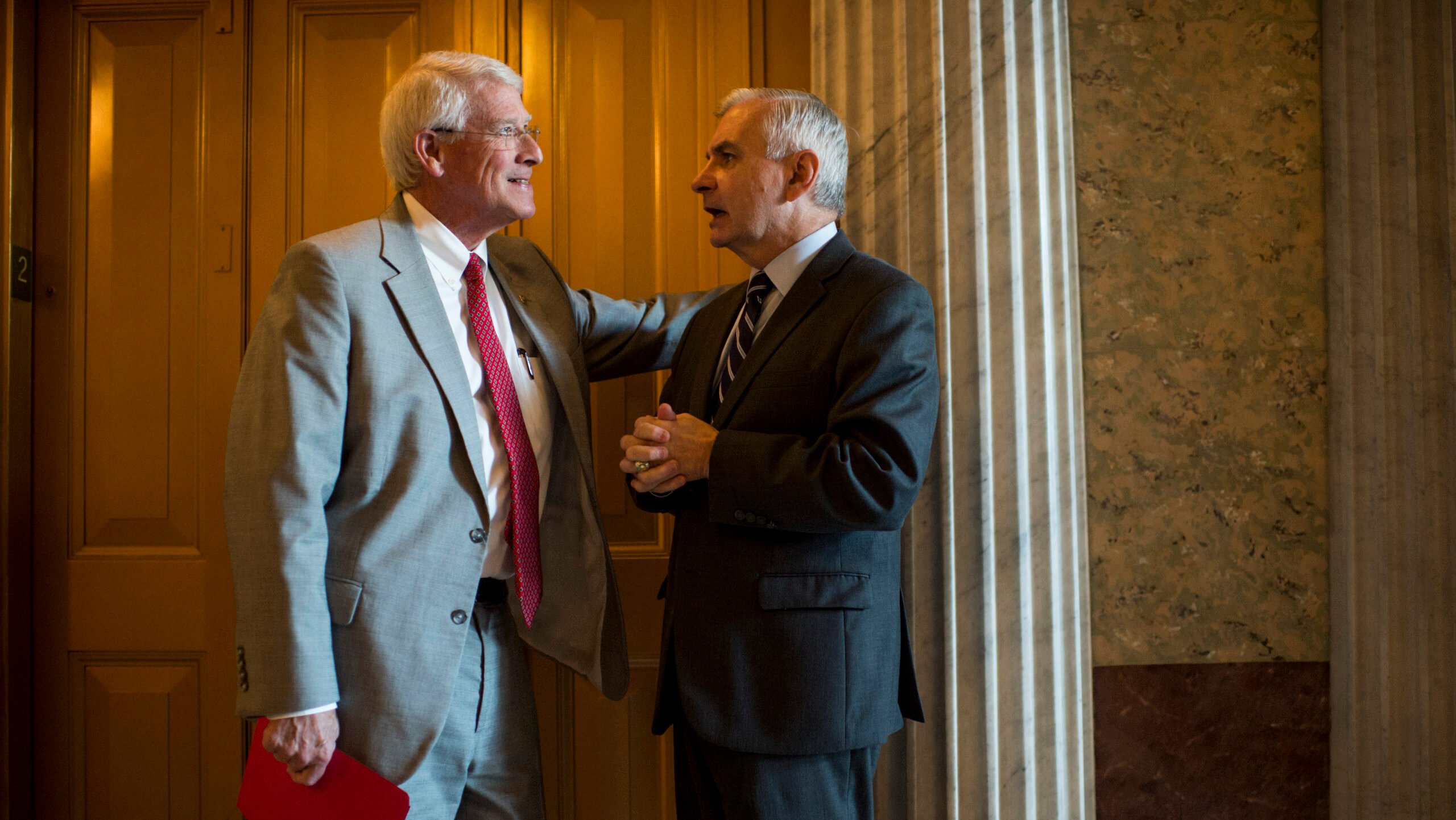
UNITED STATES – AUGUST 4: Sen. Roger Wicker (R-MS) left, and Sen. Jack Reed (D-RI) talk on the second floor of the Capitol as they both arrive for the policy luncheons on Tuesday, Aug. 4, 2015. (Photo By Bill Clark/CQ Roll Call)
WASHINGTON — The Senate Armed Services Committee has approved a $911.8 billion topline for the National Defense Authorization Act, a move that would shatter spending limits imposed by last year’s debt ceiling deal.
The bill greenlights a total of $878.4 billion for the Defense Department and $33.4 billion for defense-related activities in the Department of Energy. When combined with an estimated $11.5 billion in non-NDAA defense activities, the total national defense topline sought by the SASC is $923.3 billion — blowing past the $895 billion defense spending cap imposed by the Fiscal Responsibility Act (FRA) by a significant margin that staffers put in the range of $25 billion.
After a two day, twelve hour long markup period where committee members amended the bill behind closed doors, SASC passed the measure Thursday night in a 22-3 vote, moving it to the Senate floor. Details of the vote were released Friday.
Notably, SASC Chairman Jack Reed, D-R.I., voted against the bill due to concerns that it could pressure congressional appropriators to break the FRA caps, which would trigger sequestration cuts that would hurt military readiness, a committee staffer told reporters during a briefing this morning.
The amendment to increase the defense topline was offered by the committee’s top Republican, Mississippi Sen. Roger Wicker, who for several weeks has been calling for a major increase in defense spending.
“My amendment to increase the budget topline is a down payment, and it keeps advancing the discussion. Negotiations need a starting point, and this is not the end. I will not give up on reaching a defense level that meets the moment,” Wicker said in a statement following the release of the bill.
Sens. Elizabeth Warren, D-Mass., and Tom Cotton, R-Ark., joined Reed in opposing the bill, Sen. Tim Kaine, D-Va., said in a roundtable with reporters.
“We had an awful lot of discussion about the virtues of sticking with the FRA,” Kaine said, adding that Wicker made the argument that he had spoken with House and Senate defense appropriators and believed they were likely “to positively entertain this without cutting the defense bill and without cutting non defense spending items.” That reasoning helped sway three Democrats to support Wicker’s amendment and push it over the line.
“I didn’t love the deal — the FRA — and I thought the priorities advanced by Senator Wicker were good priorities. But I do kind of feel like when you make a deal like that, you should strive to try to stick with it,” Kaine said.
Beyond the decision to breach the FRA spending caps, the SASC version of the defense authorization bill breaks with the House’s bill on several key spending priorities and policy provisions.
It adds an additional $1.4 billion for a third Arleigh Burke-class destroyer, where both the House defense policy and spending bills keep procurement at two ships, and adds $4 billion overall for munitions procurement spread among the services.
It also veers sharply away from the House defense bills on the matter of the Pentagon’s largest acquisition program, the F-35 Joint Strike Fighter. The House NDAA cut 10 F-35s and imposed punitive measures meant to increase oversight of the program, while the House appropriations bill adds eight additional jets. But SASC chose to keep F-35 procurement at 68 jets — the Pentagon’s stated request — and the bill summary does not include any language related to the aircraft.
On the policy side, the SASC bill would require the Air National Guard to transfer “certain space functions” to the Space Force, but puts strict restrictions on the number of billets that can be moved to the space service, limiting those transfers to six specific units from six states, another SASC staffer said. The provision also stipulates that “such transfer shall not reduce the end strength for the affected state Air National Guard organizations,” allowing the Guard to increase its capacity in other mission areas.
The position is a marked shift from the House NDAA language, which requires approval from that state’s governor, or the House appropriations bill, which forbids the transfer.
Finally, unlike the House version, the SASC bill tackles the recommendations laid out by the bipartisan, congressionally-mandated Commission on Planning, Programming, Budgeting, and Execution (PPBE) Reform, creating a cross-functional team to implement the group’s recommendations. Provisions also require the Pentagon to revise its financial regulations and submit an annual report on the progress implementing the team’s recommendations. (HASC staffers told reporters in May that House lawmakers opted to allow the Defense Department to implement the PPBE recommendations as it sees fit.)
The bill includes a long list of provisions meant to bolster the US presence in the Pacific, with the bill summary stating that China poses an increasing threat to the United States and our allies and partners in the Indo-Pacific.”
SASC lawmakers approved full funding for the Pacific Deterrence Initiative and temporarily give the head of Indo-Pacific Command the power to authorize military construction projects worth up to $30 million each. It adds $100 million for the training of Taiwan’s military, and requires the Pentagon to create a multi-year plan to establish a stockpile for Taiwan that could be used in a regional contingency.
The NDAA also authorizes a new Indo-Pacific Security Assistance Initiative that would allow the Pentagon to provide weapons and support to allies and partners in the region. It also requires the Pentagon to create a plan to establish joint force headquarters in Japan and Australia that would work under Indo-Pacific Command.
For Ukraine, the bill adds another two years of performance authority to the Ukraine Security Assistance Initiative and fully funds the European Deterrence Initiative. It also requires a report on how the Pentagon intends to implement lessons learned from Ukraine.
The bill also increases aid to Israel, while supporting efforts to increase humanitarian assistance for civilians in Gaza. Specifically, the NDAA increases support for US-Israel counter-tunneling cooperation and boosts US-Israeli cooperation on emerging technology by $47.5 million.
The provisions in the SASC bill face a long road ahead before being signed into law. The dollar amounts laid out in the NDAA are just recommendations, and buy-in from congressional appropriators is necessary for that guidance to make the final budget. Meanwhile the SASC version of the NDAA must also be passed by the Senate and go through a compromise process with the House before a final bill is voted on by both chambers.
Navy: More Destroyers, And Some Hope For The Constellation-class
Alongside the additional Arleigh Burke-class destroyer, SASC opted to increase funding for the Virginia-class submarine program by about $1.1 billion, supporting the construction of a second Virginia-class submarine. The House NDAA added an additional $1 billion to start construction on a second boat.
The committee took a slightly more lenient approach to the Constellation-class frigate than its House counterparts, which zeroed out funding for the program, with Senate authorizers instead opting to fence off funds until the Defense Department certifies that the design is complete.
However, SASC’s version of the bill would prohibit construction of the first Landing Ship Medium until the department completes the design and authorizes the procurement or chartering of “a minimally modified commercial or non-developmental landing ship that meets core Marine Corps sealift and beach landing requirements.”
Lawmakers authorized $252 million for the nuclear-armed sea-launched cruise missile, known as SLCM-N, and included increased funding for the Autonomous Low Profile Vessel.
The bill also approves a block buy contract for up to 37 CH-53K helicopters for the Marine Corps, as well as multiyear procurement of CH-53K engines. Funding for the E-2D Hawkeye was reduced to prevent the Navy from shutting down the production line.
Finally, Senate authorizers included several provisions meant to bolster undersea and surface drone technologies, adding funds for the testing of additional autonomous surface and UUV dual-modality vehicles. It also would require the Navy to conduct a competitive demonstration of extra-large uncrewed underwater vehicles.
Air Force: A Mixed Bag On Fighter Retirements
The Air Force would see its fighter and munitions procurement increased under the legislation, which funds procurement of an additional six F-15EX fighter jets. Production of the HH-60W Combat Rescue Helicopter would also be thrown a lifeline, as authorizers would add five helos despite the service’s repeated attempts to end the platform’s procurement.
Many of the service’s requested divestments would also be granted, including A-10s, F-15C/Ds and F-16C/Ds. However, F-15E and F-22 retirements would be blocked, and the Air Force would be required to keep its E-3 AWACS fleet flying until its capabilities can be sufficiently replaced, whether by the E-7 Wedgetail or, presumably, space-based assets. Interestingly, authorizers would also require a plan to transfer the Air Force’s retired UH-1N helicopters — which are being replaced by the MH-139 Grey Wolf — to the Army as a “bridging solution” until a more long-term rotary wing replacement is available for Kwajalein Atoll.
As the Air National Guard looks to retain all 25 of its fighter squadrons amid a wave of aircraft retirements, authorizers would require a plan and cost estimate to modernize each. And as the Navy pushes out its plans to field a next-gen fighter aircraft while the Air Force’s own sixth-gen jet faces fresh uncertainty, the two services would be required to conduct a joint study on the future of air superiority for the 2030s and 2040s.
Among other items, the Air Force Research Laboratory would be directed to hold a briefing on integrating stratospheric balloons in military exercises, and a plan to modernize the service’s tanker fleet would be required alongside submission of the FY26 budget request. Authorizers would also cut funding for the Air Force’s E-4B Nightwatch and Air Force One replacements amid contract delays, and the service’s bid to add a C-40 would go forward but with fewer dollars.
Drones: Funding For New Tech, And Countering Enemy Threats
Authorizers took a keen interest in UAS and counter-UAS technologies, and broadly want to see DoD step up to the challenge posed by drones. Overall, the committee added $500 million for counter-UAS technologies.
Alongside steps like more briefings from the services on their counter-UAS efforts, authorizers would also increase funding for UAS defenses and provide more resources to combatant commanders’ counter-UAS efforts. Amid reports of drone incursions on US military installations, authorizers would explicitly require a strategy for “referring drone offenses for investigation and prosecution, and assessing resources or authorities necessary for drone incursion response.”
Authorizers would also direct DoD to craft a strategy that would secure a “domestic and allied supply chain” for UAS components. Funding would also be increased for efforts to design and produce “low-cost, attritable” drones and their accompanying AI agents. Authorizers would also specifically direct the Army to “certify at least one additional interceptor and production manufacturer for the M-LIDS/FS-LIDS counter-UAS system,” according to the committee’s summary.
Army: So Many Reports
For the Army, SASC authorized a boost in funding for combat aircraft procurement, armored fighting vehicles, munitions, long-range fires and short range fires, according to the bill summary. It also continues funding for Army priorities like long-range fires, future vertical lift, next-generation combat vehicles, and air and missile defense.
It also directs the Army to helm briefings and reports on a list of topics that include: the Army’s network modernization and Future Vertical Lift initiatives, AH-64 Apache modernization, the long term sustainment of the UH-72A Lakota helicopter, the feasibility of basing Army Prepositioned Stocks in a partner nation, and fielding timelines associated with the Improved Turbine Engine Program.
The SASC did not include language calling for an Army drone corps, unlike its House counterpart.
Space Force: A Focus On Ground Targets
Beyond the National Guard issue, the Senate NDAA includes language aimed at tightening up the Space Force’s acquisition efforts. It allows the Defense Department to identify “poor-performing contractors” and requires approval for future contracts to those vendors.
The bill has a particular interest in the space-based mission to identify air and ground-based targets, authorizing the creation of a program executive office and directing a review of Defense Department programs related to the mission.
It also establishes a Commercial Augmentation Space Reserve Fleet and requires a report on commercial insurance for military space support services. It also requires the department to create a Program Executive Officer for Space Command, Control, and Integration, which will “acquire a system to support a combined operations center at the National Space Defense Center.”
UPDATED 6/14/24 at 12:50 pm ET with comment from Kaine


